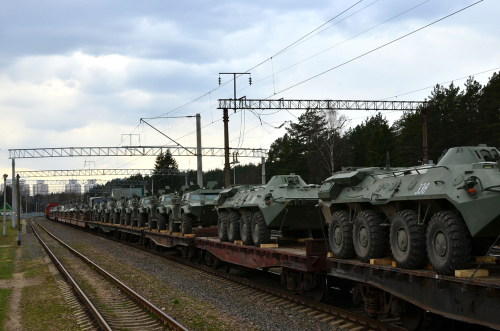Brussels (Brussels Morning) Russian troops and armed units, along the Ukraine border, have been building for months. According to western intelligence agencies, the number currently stands at 100,000 and they are believed to be capable of reaching 165,000 by January.
This action has been classified as “unprovoked and unjustified” by NATO, who endeavour to maintain peace, security, and stability.
During a press conference held at NATO Headquarters in Brussels, December 16, NATO Secretary-General Jens Stoltenberg warned that any attempt to invade Ukraine would result in “massive consequences” and “carry a high cost”.
Throughout the conference he repeatedly explained how the “support for Ukraine is not a threat to Russia” and that channels for communication are open, “we actually believe in dialogue… especially when times are difficult.”
He didn´t reveal what military support, from any of the 30 NATO allies, would look like. However, US President Joe Biden recently confirmed that sending US troops was “not on the table” and UK Defence Secretary Ben Wallace has confirmed the UK would follow suit as Ukraine “is not a member of NATO.”
Following the NATO conference, Russian President Vladimir Putin responded, in Moscow, denying a desire to attack its neighbour and discussed, in depth, how it is the presence of NATO in Eastern Europe, that is to blame for the aforementioned troop movement. He said, “Russia has been forced to respond at all times.”
Referring to NATOs long relationship with Ukraine, which Putin finds unnecessary, he continued “the situation keeps getting worse and worse, deteriorating more and more.”
While Putin denies any pending attacks, Dmitry Kiselev a popular media representative who promotes the Kremlin´s agenda said that they [Russia] will “one hundred percent” use force to defend itself and that Russia will view the induction of Ukraine into NATO as a threat.
This is not the first time Ukraine has had to endure a military presence from Russia.
In 2014, Russia secured Crimea, after what locals called “little green men” took over checkpoints and important facilitates on the peninsula. This became the largest land seizure in Europe since World War II. Stoltenberg claims this was “illegal and illegitimate” and NATO doesn’t recognise it.
While it seems unlikely in the present climate, at the annual address to the Ukrainian parliament, President Volodymyr Zelenskiy claimed getting Crimea back was a top priority. Until then, all eyes remain fixed on the Ukraine border.


